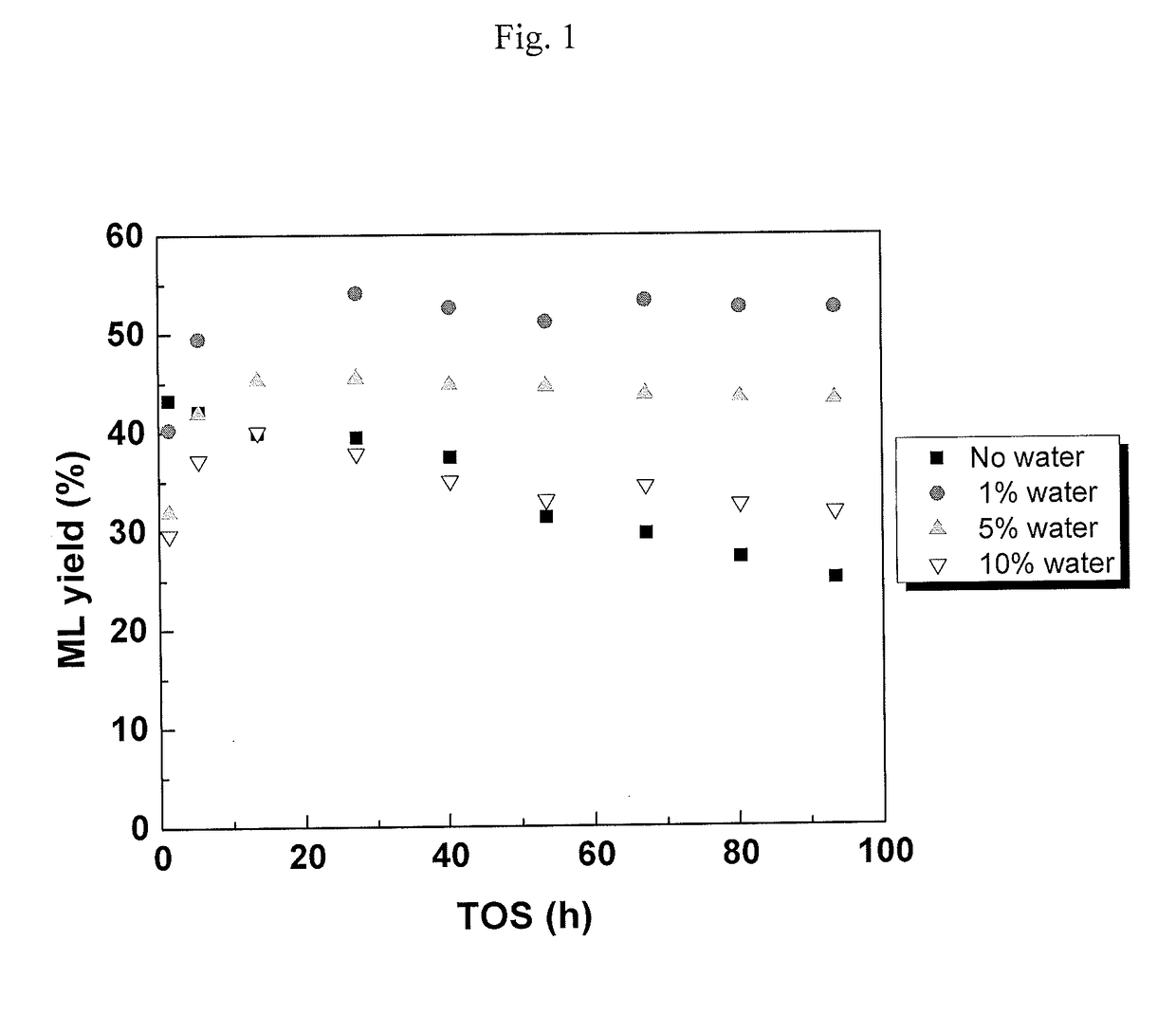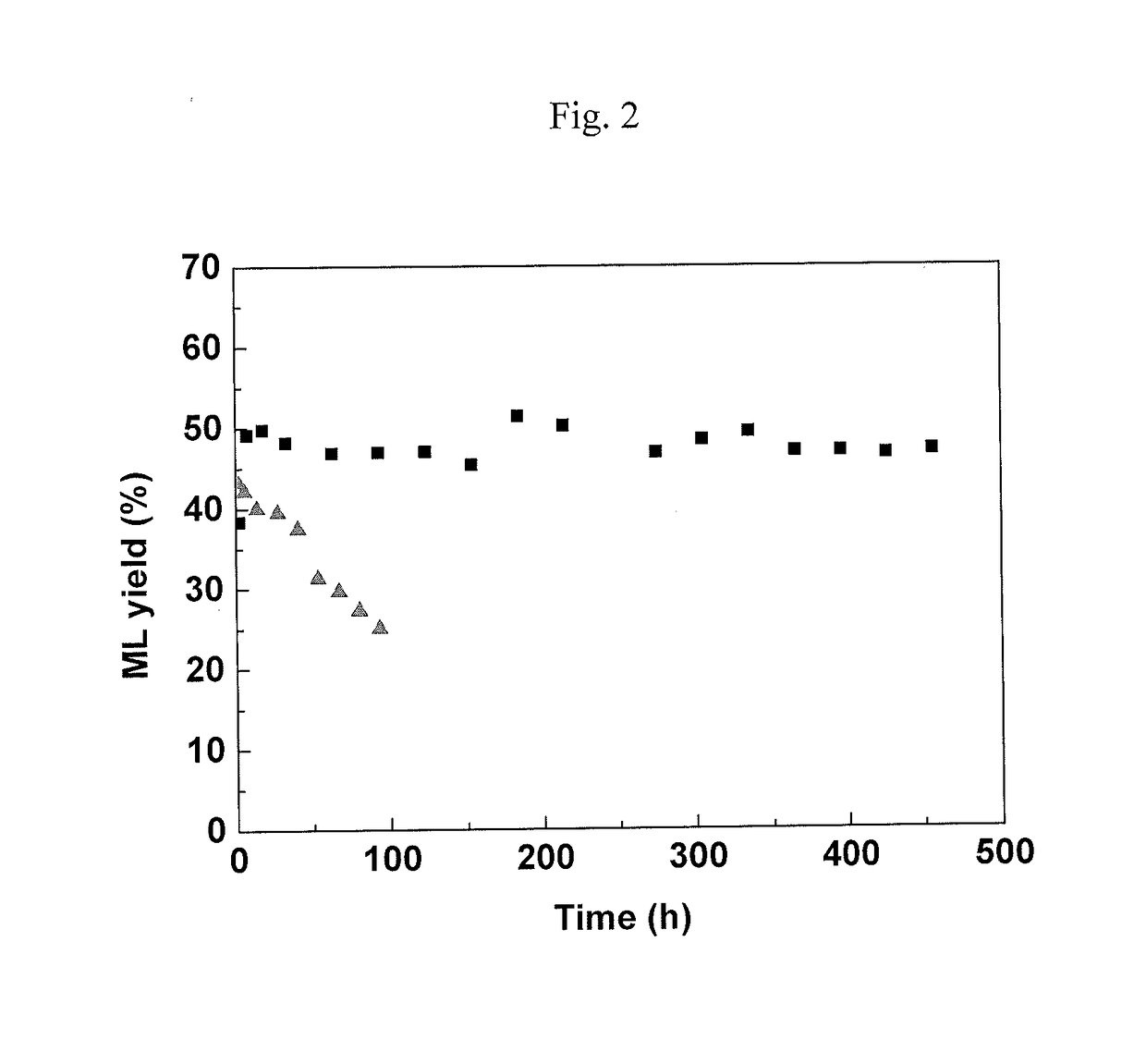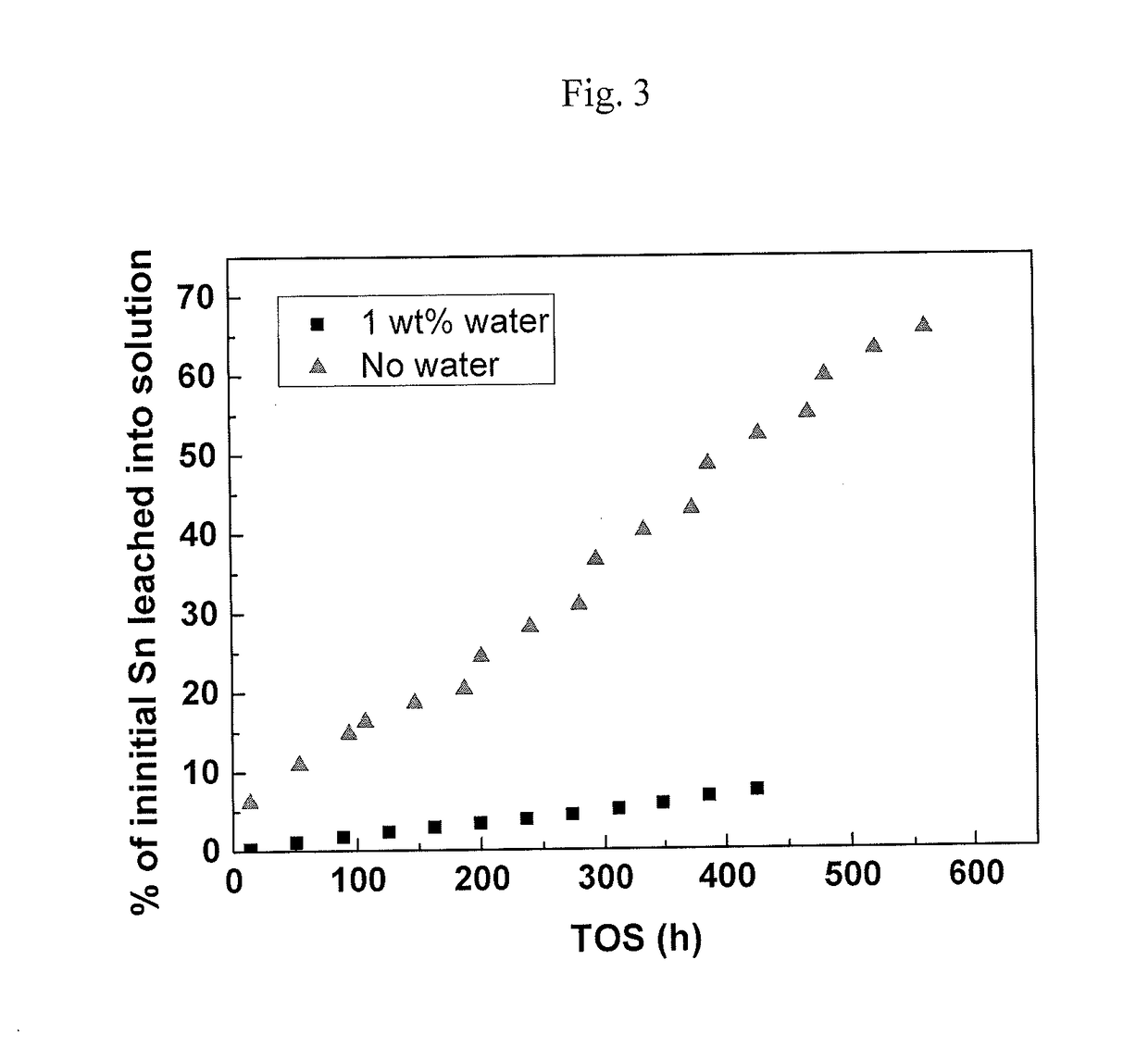Process for preparing esters of lactic acid, and 2-hydroxy-3-butenoic acid or alpha-hydroxy methionine analogues from sugars
a technology of lactic acid and esters, applied in the field of new products, can solve the problems of poisoning deactivation of lewis acid catalysts, and disadvantages of water presence in the reaction process,
- Summary
- Abstract
- Description
- Claims
- Application Information
AI Technical Summary
Benefits of technology
Problems solved by technology
Method used
Image
Examples
example 1
[0073]Preparation of Catalyst
[0074]Sn-BEA (Si / Sn=125) is prepared according to a modification of the procedure described in U.S. Pat. No. 4,933,161. Commercial zeolite Beta (Zeolyst, Si / Al 12.5, ammonium form) is calcined (550° C. for 6 h) to obtain the H form (de-aluminated form) and treated with 10 grams of concentrated nitric acid (Sigma-Aldrich, 65%) per gram of zeolite beta powder for 12 h at 80° C. The resulting solid is filtered, washed with ample water and calcined (550° C. for 6 h) to obtain the de-aluminated Beta. This solid is impregnated by incipient wetness methodology with a Sn / Si ratio of 125. For this purpose, tin (II) chloride (0.128 g, Sigma-Aldrich, 98%) is dissolved in water (5.75 ml) and added to the de-aluminated Beta (5 g). After the impregnation process, the samples are dried 12 h at 110° C. and calcined again (550° C. for 6 h).
[0075]Catalytic Reaction in Continuous Flow Mode:
[0076]Fructose (Sigma-Aldrich, 99%) was dissolved in methanol (Sigma-Aldrich, 99.9%)...
example 2
[0080]Determination of the Total Amount of Soluble Tin in the Liquid Medium:
[0081]The determination of the total amount of soluble tin (Sn) was carried out using inductively coupled plasma mass spectrometry (ICP-MS). The methanol sample was diluted by weight with an 80 / 20 xylene / 2-propanol mixture. The total Sn content is quantified by ICP-MS (Agilent 7500ce ICP-MS instrument) at the Sn isotope masses 118 and 120 by comparison with a calibration curve made from a 900 ppm Conostan organo-metallic Sn standard diluted with xylene. Indium is used as an internal standard to correct for drift and matrix effects. Removal of molecular interferences in the ICP-MS analysis is done with Helium kinetic energy discrimination. EnviroMAT “Used oil” certified reference standard which gives an informational value for Sn (305 mg / kg) is analyzed with each sample batch to verify the precision of the method.
example 3
[0082]This example illustrates the conversion of C2-sugars (glycolaldehyde) to MVG with increased yield due to the effect of water in batch experiments.
[0083]Catalytic Reactions in Batch:
[0084]A stainless steel pressure vessel (40 cm3, Swagelok) was charged with 15.0 g of methanol (Sigma-Aldrich, >99.8%), the required amount of water, 0.200 g glycolaldehyde (glycolaldehyde dimer, Sigma) and 0.150 g of catalyst. The reactor was closed and heated to 160° C. under stirring (900 rpm). The reaction was continued for 16 hours, and after this period, the reaction was quenched by submerging the vessel in cold water. Samples from the reaction vessel were filtered and analyzed by HPLC (Agilent 1200, Biorad Aminex HPX-87H column at 65° C., 0.05 M H2SO4, 0.5 ml / min) to quantify unconverted glycolaldehyde (GA); and GC (Agilent 7890 with a Phenomenex Solgelwax column was used to quantify the following: Methyl lactate (ML), methyl vinylglycolate (MVG, methyl-2-hydroxy-3-butenoate), glycolaldehyde ...
PUM
 Login to View More
Login to View More Abstract
Description
Claims
Application Information
 Login to View More
Login to View More - R&D
- Intellectual Property
- Life Sciences
- Materials
- Tech Scout
- Unparalleled Data Quality
- Higher Quality Content
- 60% Fewer Hallucinations
Browse by: Latest US Patents, China's latest patents, Technical Efficacy Thesaurus, Application Domain, Technology Topic, Popular Technical Reports.
© 2025 PatSnap. All rights reserved.Legal|Privacy policy|Modern Slavery Act Transparency Statement|Sitemap|About US| Contact US: help@patsnap.com



